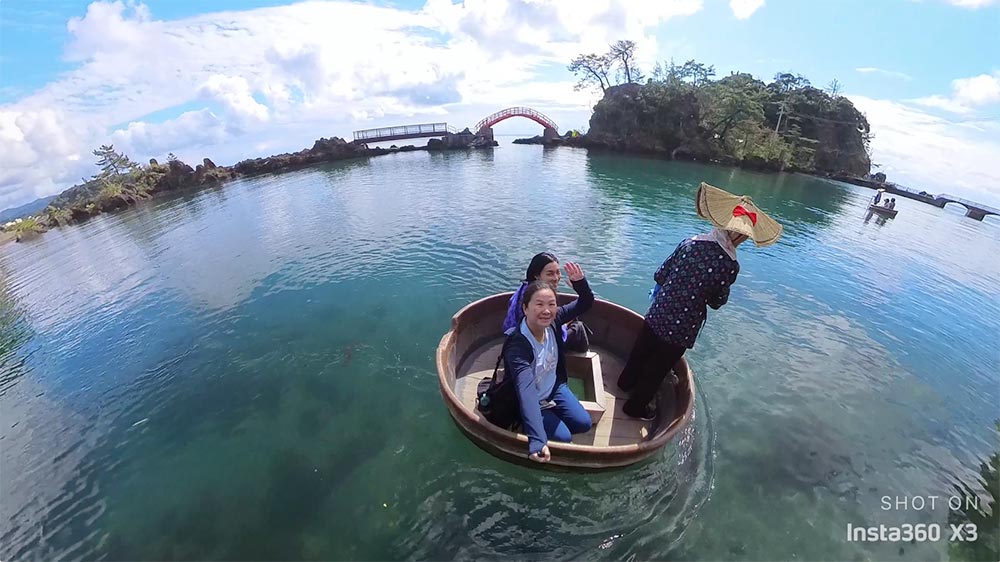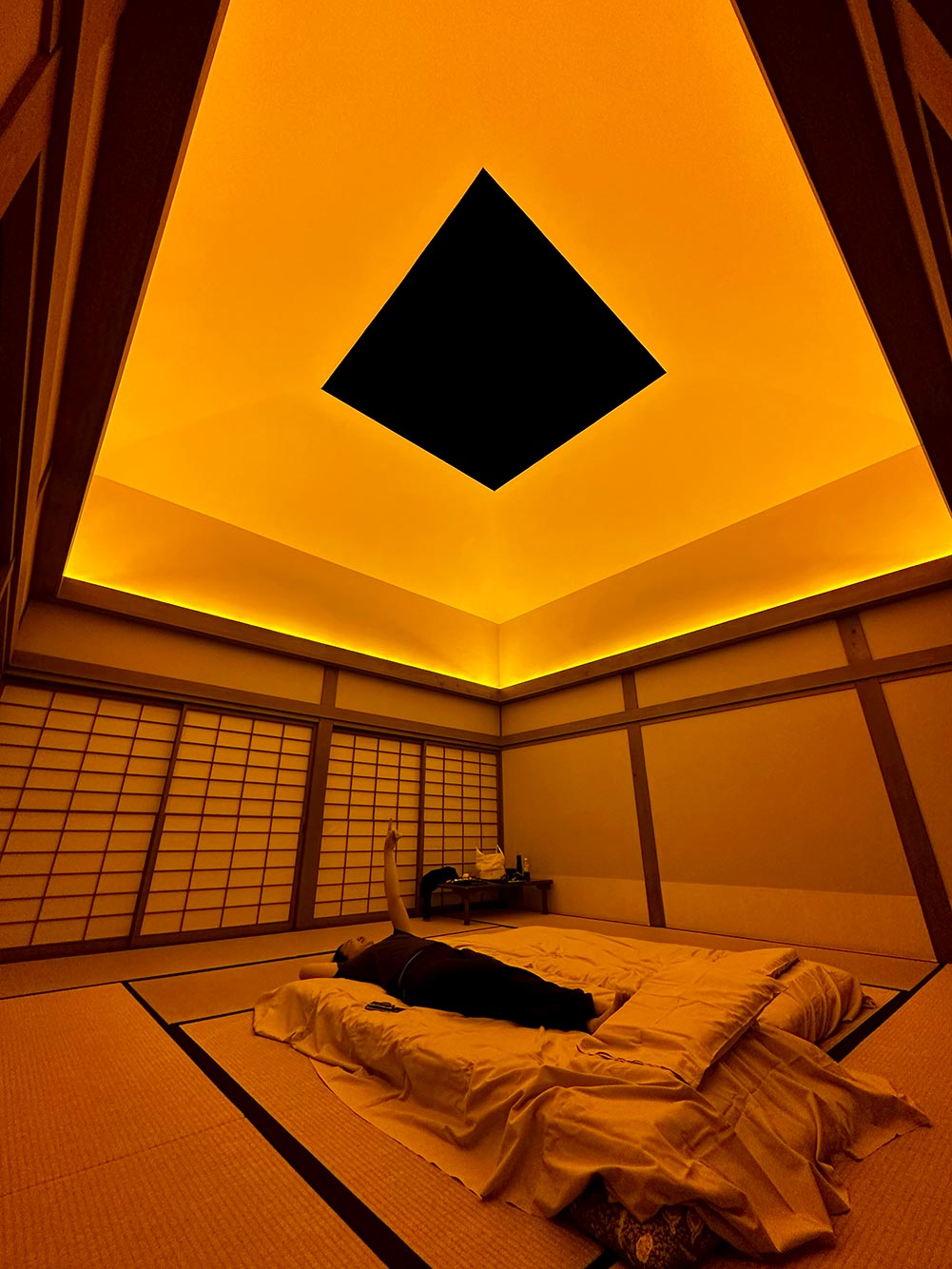Explore beyond the usual Tokyo, Osaka and Hokkaido that are on everyone’s usual Japan itinerary. With 47 prefectures, there are lots of hidden gem spots to experience Japan’s unique traditions and culture. On my recent trip to Japan, I did a road trip in Niigata and found some unique activities to do if you are looking to plan a Japan trip that’s not so typical. Read on for my list of Niigata hidden gems!
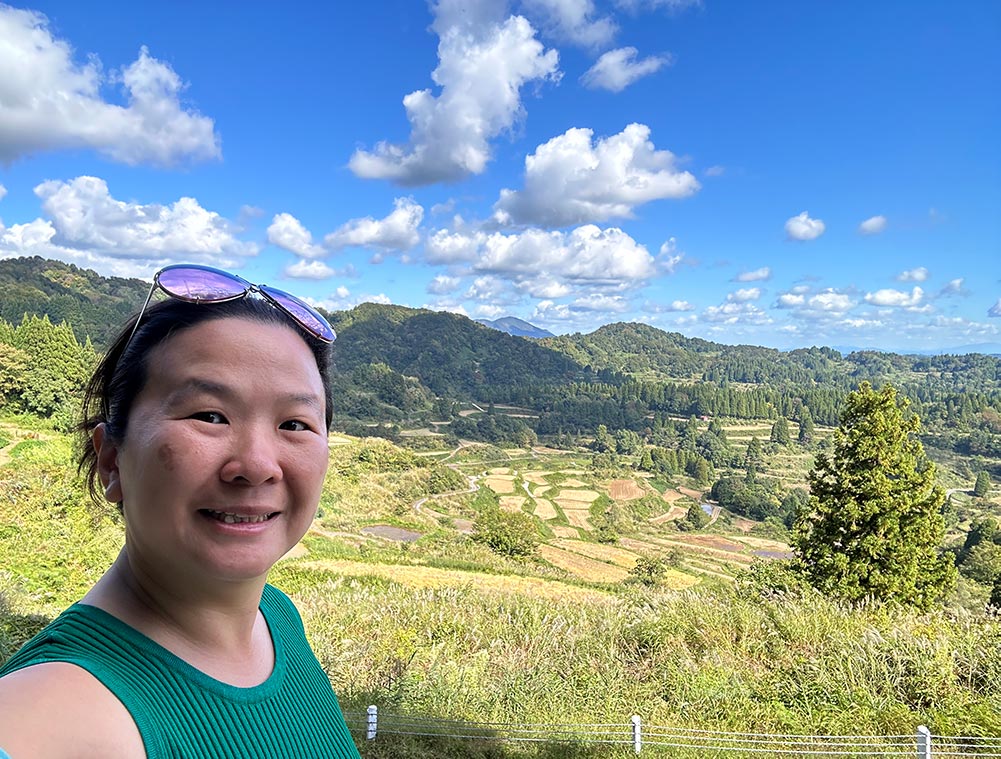
This article is sponsored by Income Insurance. I’m working with Income Insurance to uncover hidden gems on my travels in 2023! Stay tuned for more blogs on cool places that I’ve visited around the world and always make sure you’re covered by Income’s Travel Insurance to travel with confidence. Enjoy up to $15,000 coverage for overseas transport and accommodation expense, including for new COVID-19 variants^ with Income’s Travel Insurance!
Learn more about Income’s Travel Insurance and check out the latest travel insurance promotions here.
^ For trip cancellation and trip shortening.
What’s special about Niigata?
Niigata is a prefecture about 2 hours from Tokyo by shinkansen. This region on the northwest coast of Honshu Island gets one of the highest snowfalls in Japan and is most busy in the winter when skiers and snowboarders descend upon this usually quiet rural area.
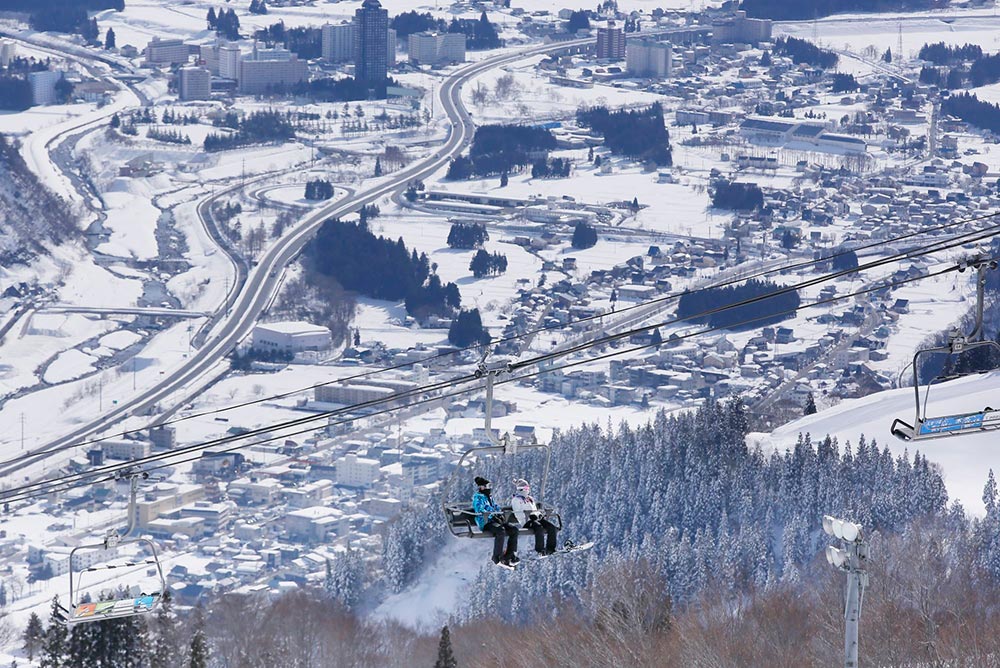
All that snow has also made Niigata’s water extra pure, and Niigata rice and related products like sake and soba are considered top quality in Japan. You’ll also find plenty of onsens all around this region with a whole variety of minerals and waters to soak in.
Despite it being a top winter destination, Niigata actually has plenty of really cool and unusual things to do in the warmer seasons. I visited Niigata in October as the temperature starts to drop a little but before the autumn leaves start to show.

The great thing about warmer periods is not having to deal with snow – Niigata is quite rural so driving is the best way to get around, and for us tropical Singaporeans, driving in snowy/icy conditions can be quite precarious. Check out my driving in Japan guide if you’re planning your own Japan road trip!
While no one wants to get into an accident while driving overseas, it’s good to travel with peace of mind. Income’s Travel Insurance provides medical expenses overseas coverage of up to $1,000,000*.
* Based on an adult under 70 years old who is covered with Income’s Travel Insurance (Standard Preferred Plan or Enhanced PreX Prestige Plan).

Also, it’s generally less crowded all around. While I usually find myself surrounded by other tourists when I visit popular Japan destinations in Honshu like Tokyo, Kyoto and Osaka, this was not the case in Niigata where I mostly saw locals and domestic Japanese tourists. While communication can be a bit more challenging since it’s less touristy and less English is spoken, we still managed to get around with the help of translator apps.
Ready to uncover some of Japan’s hidden gems in Niigata? Here’s a map of my finds, read on to learn more.
Learn how snow makes food taste better
Hakkaisan Yukimuro – Uonuma
Niigata gets a serious amount of snow every year. We’re talking something like 1-2m of snowfall in a day! You’ll notice the houses in this region all tend to have steep sloping roofs to stop snow accumulation on top of houses.
This massive snowfall isn’t just used for skiing though. The Japanese developed something called yukimuro 雪室 or snow storage, where they collect all this snow and pack it into an insulated warehouse to create a naturally-cooled refrigerator. The snow then melts away very slowly as the days go by – believe it or not it can last until the following winter! These snow cooled storage houses were used to keep food cool and fresh even in the hot summers before electricity and fridges were a thing.
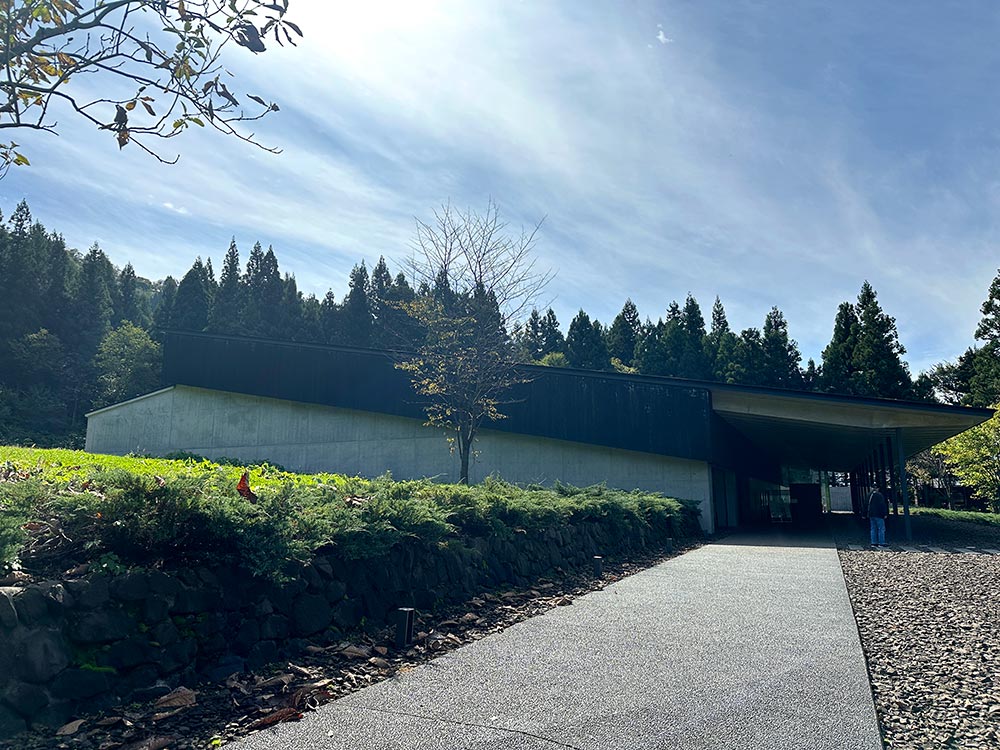
Here in Uonuma, you can take a free tour of the yukimuro built by sake producer Hakkaisan, an enormous facility that can hold up to 1,000 tons of snow. While straw was the main form of insulation back in the day, the Hakkaisan Yukimuro is much more high-tech today, utilising machinery and metal to keep the snow from melting too quickly.
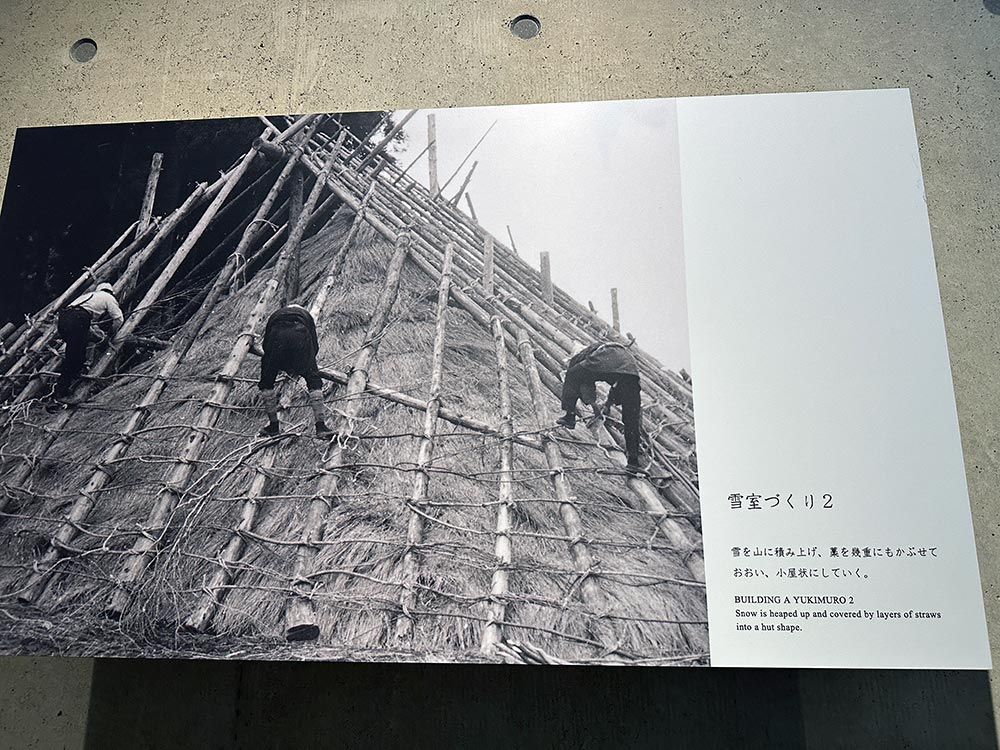
I visited in October and found it hard to believe that the cold 5.5°C temperature in the yukimuro was purely because of the pile of snow sitting in one corner of the warehouse and not from air conditioning! The snow pile I saw was already quite small since it’d been there since last winter – typically they pack the snow right to the roof in winter, and over time it gradually melts away until they repack it in the next snow season.

If you’re wondering why Hakkaisan has a yukimuro in the first place, it’s because people have found that storing rice, sake and other foods for long periods and ‘snow-aging’ them in these perpetually ice-cold yukimuro somehow makes it taste better. You can buy these special snow-aged foods and liquor in the gift shop.
The end of the tour brings you to the sake tasting section where you can taste all of Hakkaisan’s sake, shochu and other liquors for free. The hidden gem at the bar is the sake that’s been stored in the yukimuro for 3 years and 8 years respectively. In comparison to the standard sake, the 3-year snow cooled sake was distinctly tastier, and the 8-year sake had a really rounded taste right from the first sip!
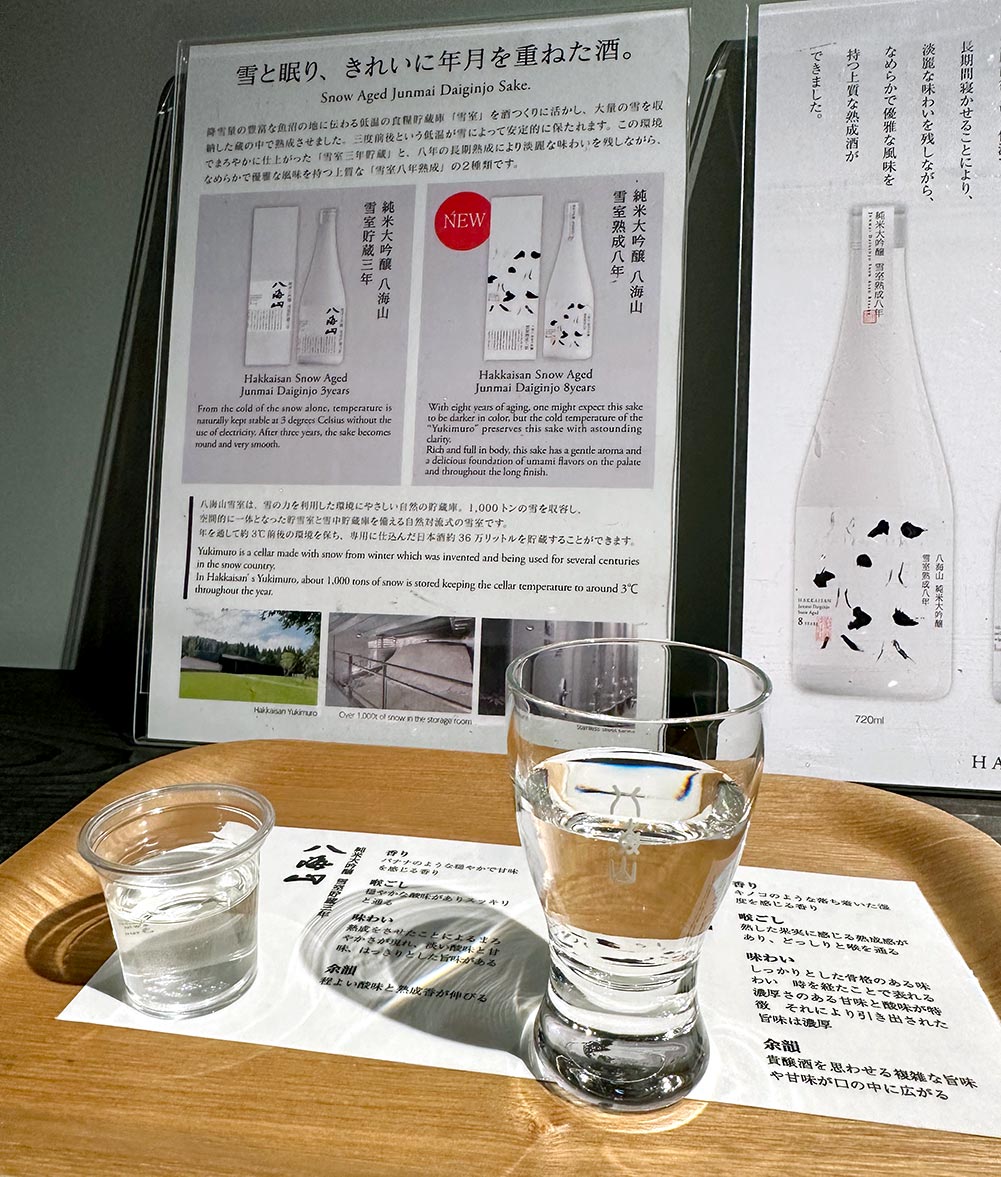
Visitor info
Hakkaisan Yukimuro is located in Minamiuonuma (South Uonuma) [Google Map]. It’s a part of the larger Uonuma no Sato facility and located 7 minutes drive away from the closest train station – Itsukamachi Station on the JR Joetsu Line.
The Hakkaisan Yukimuro tour is 30 minutes long and is held several times a day. The tour is free – take a queue number from the information counter. The guide speaks completely in Japanese but there are signs and photos in the start of the tour with English translations which basically encompasses what the guide says so you’re not missing much even if you don’t understand Japanese.

What’s nearby
The Uonuma no Sato facility has several other shops and eateries worth stopping by before or after your tour. If beer is more your thing, drive over to the Sarukurayama Brewery which is also owned by Hakkaisan for some craft beer tasting. The burgers here are good and you get a great view of the countryside from here as it’s the highest point in the brewery. [Google map location]
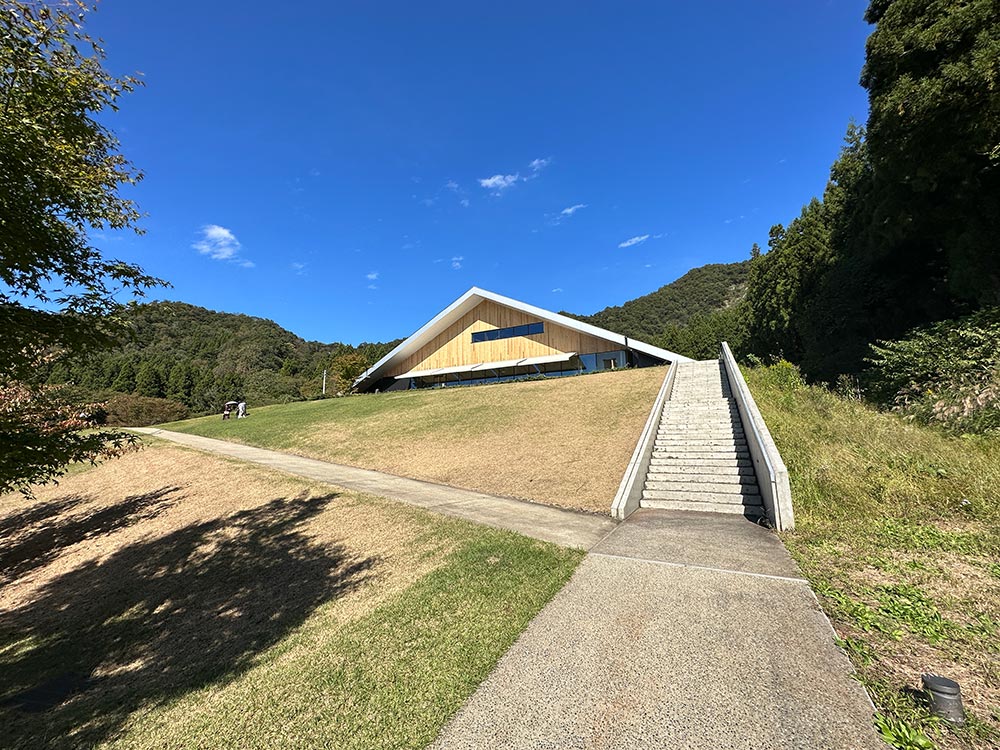
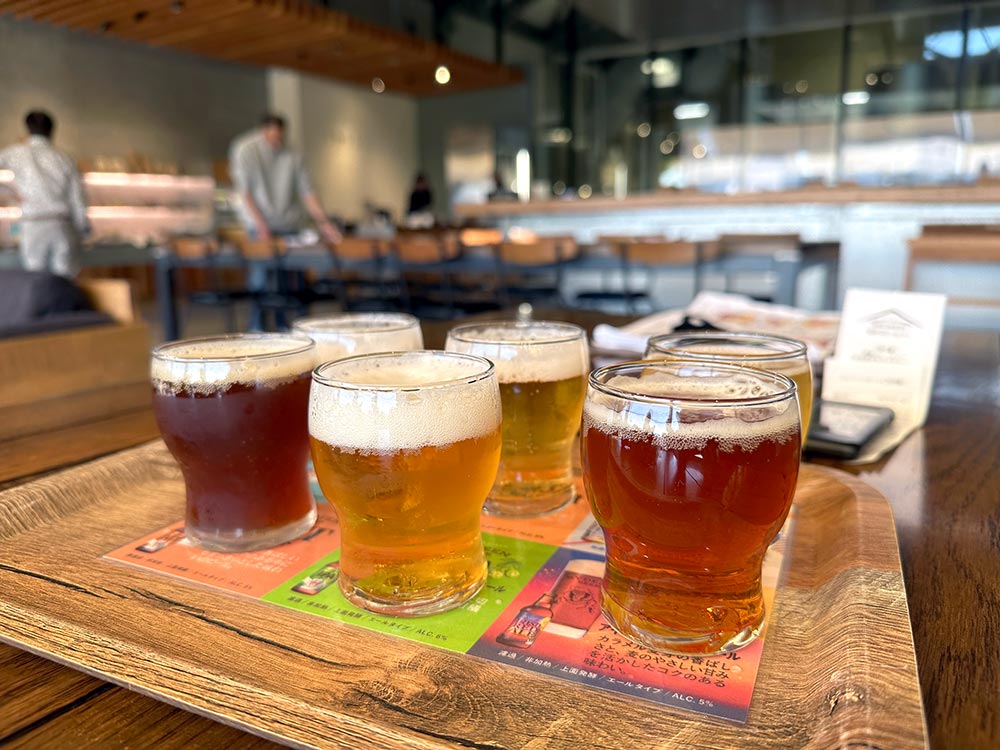
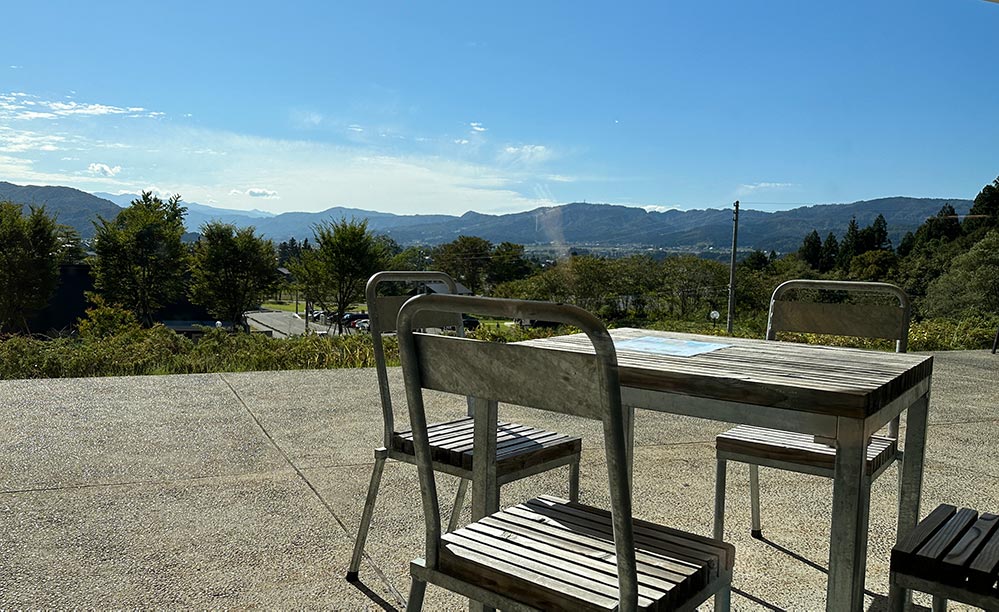
If you’re teetotalling or the designated driver, there is a spot 10 minutes away from the brewery known as the Rydeen-sama water source, which is the water used to make the Rydeen craft beer that Hakkaisan brews. Bring along a bottle – that spring water is pure mountain runoff and super fresh and cold throughout the year! Locals can be spotted filling up large containers with this water. [Google map location]
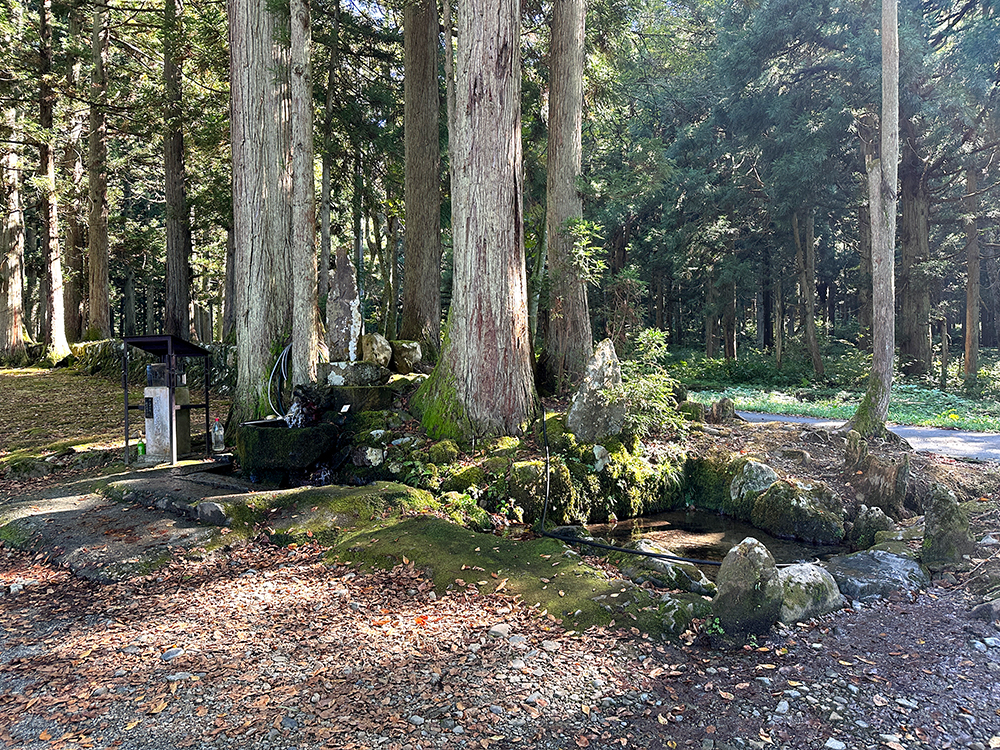
Experience how art transformed an agricultural region
Echigo-Tsumari Art Field – various districts
Japan has plenty of great museums and cultural treasures, but art lovers may be surprised to find artworks and installations embedded in the rural countryside in Niigata around the Tokamachi region. This is the result of the Echigo-Tsumari Art Triennale (ETAT) that first began in 2000 and is now one of Japan’s largest arts festivals, with its most recent edition held in 2022 (postponed from 2021 because of COVID-19).
See my full guide to the Echigo-Tsumari Art Triennale here.

While ETAT commissions new works every 3 years, what’s interesting is that many of the older works have been maintained and made available for viewing or participation outside the festival period. Many of these works are also deeply embedded into the communities that they are found in, so it’s a great chance to appreciate the local culture through the art on-site.
The region where ETAT is held is also known as the Echigo-Tsumari Art Field, and covers 6 areas including Tokamachi, Kawanishi, Nakasato, Matsudai, Matsunoyama, and Tsunan. It’s pretty much impossible to check out every single piece of artwork over just a few days – I based myself in Tokamachi and spent 2 days driving around which is just scratching the surface of what the region has to offer.

Besides looking at artworks, what I found special about ETAT is that it goes beyond the typical galleries and sculptures and also includes accommodation and eating experiences. I stayed overnight at the House of Light, a James Turrell artwork modelled after a traditional house with a really cool lighting programme – see my review of my stay at House of Light.
Many of the eateries also work with the local communities to provide regional specialties for lunch, dinner and snacks as you explore – I had fantastic Tsumari Pork at Ikote in Tokamachi City.
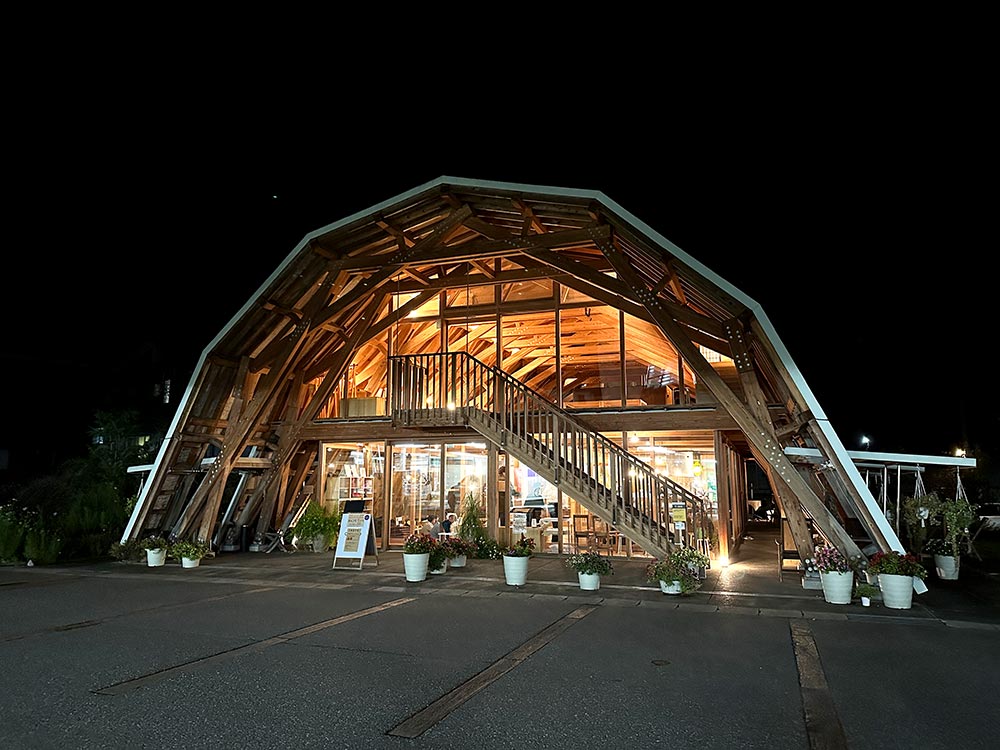
ETAT artworks to check out
The Echigo-Tsumari Art Field website has all the infomation you need about the art and artists, but the sheer volume of works to see can be a bit intimidating to figure out. Here are some of my recommended artworks and hubs that I think casual visitors can fit into their itinerary exploring the region, or read my full guide to ETAT.
Tokamachi City
The Museum on Echigo-Tsumari (MonET) (entry fee/passport required) is the main heart of ETAT and a good place to see a bunch of works and pick up information and maps to plan your route, and perhaps the most comprehensive merchandise store of all the locations. Grab a meal at the beautiful igloo-shaped Ikote nearby. You should also check out the fantastical Hachi and Seizo Toshima Museum of Picture Book Art (entry fee/passport required) in an old disused school.

Matsudai
Matsudai is about 30-40 minutes’ drive west of Tokamachi City and for art lovers, it’s a nice area to enjoy a cluster of interesting works. The Matsudai NOHBUTAI Field Museum (entry fee/passport required) near the train station has a good collection of works, and from here you can head to Matsudai Castle (entry fee/passport required) on top of a lofty hill, the atmospheric and haunting The Last Class (entry fee/passport required) and House Memory (entry fee/passport required) which looks like a human-sized spider took over it.
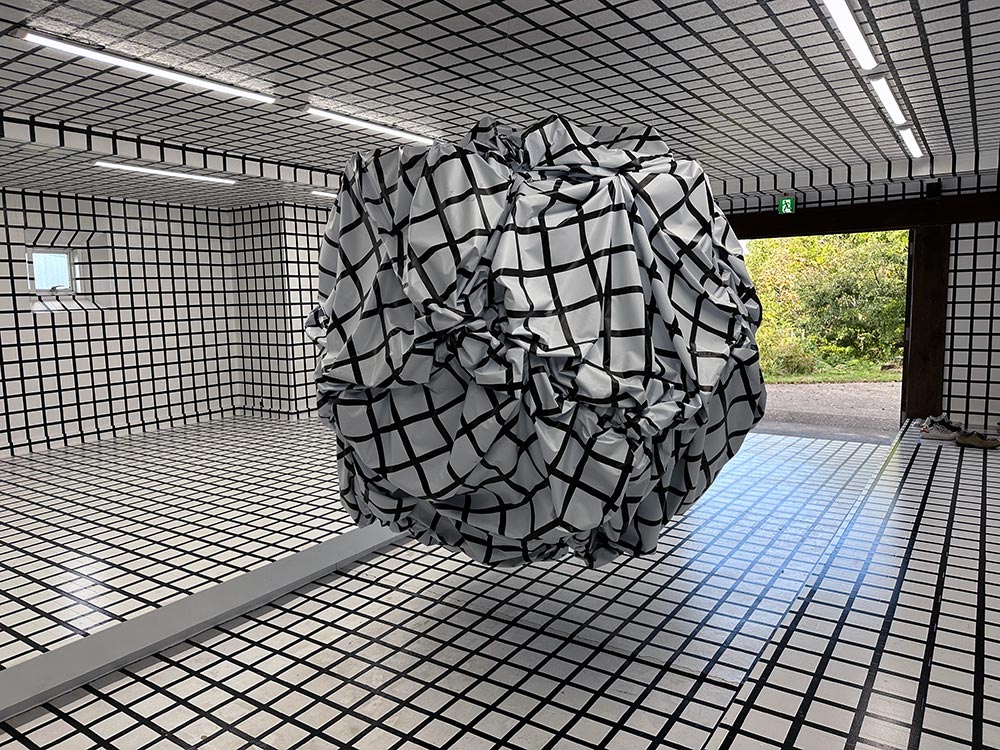
Kiyotsu Gorge
Kiyotsu Gorge (entry fee/discount with passport) has long been famous as one of the top 3 gorges in all of Japan, but in 2018, the tunnel walk was transformed into the Tunnel of Light with artworks and photo worthy spots against an amazing gorge view. Don’t miss the free footbath and ‘Periscope’ at the gift shop near the entrance and the Soko Museum of Art en route to the gorge.
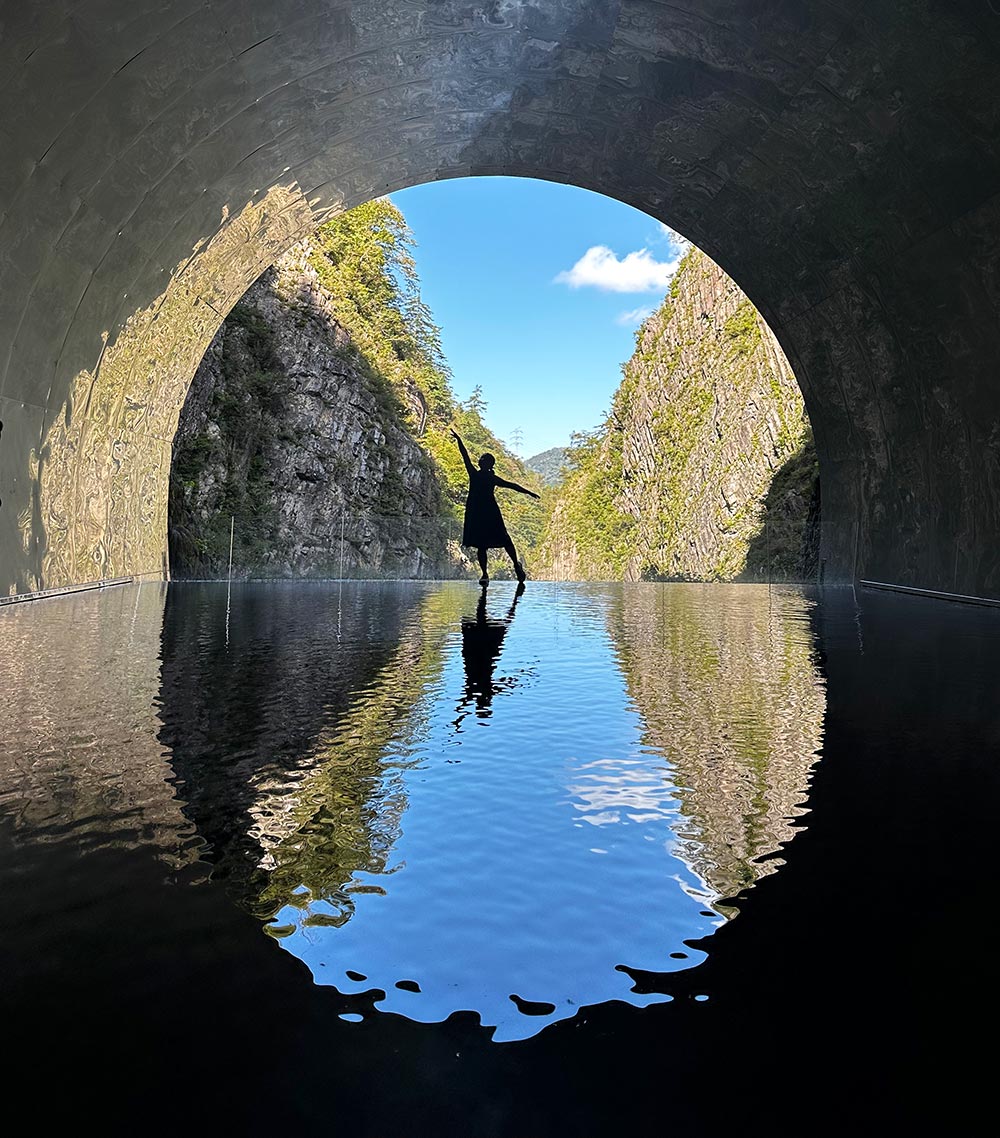
Visitor Info
The outdoor installations of the Echigo-Tsumari Art Triennale are free to view, but some of the works require an entry fee. Depending on when you go and how much you want to see, it may make more sense to buy an Admission Passport that grants you entry to all the works for one price.
This passport is usually valid for a few months, but it may be worthwhile to buy even if you are only going to be using it for just a few days. I bought the 2023 passport which was valid from April to November for 2,500 yen and while I didn’t cover everything, it would have cost me 5,400 yen to pay for entrance fees to what we visited if we didn’t have the pass.

The best time to check out Echigo-Tsumari Art Triennale works is on the weekend (Saturday and Sunday) when most of the works are open, but it may also be a lot more crowded. Avoid Tuesdays and Wednesdays because most things are closed then. I visited over Thursday and Friday – it was generally not crowded, but only half the works were open then. Some works are closed in the winter season.
I also checked out the Setouchi Art Triennale which spans the islands in the Setouchi inland sea area, another really cool art festival that’s also worth checking out!
Uncover the evolution of gold mining in Japan
Sado Kinzan Gold Mines – Sado Island
Sado Island off Niigata’s coast is Japan’s largest island in the Japan Sea. One of the more unusual things that Sado Island is known for is its long history of gold and silver mining, from as far back as 400 years ago during the Edo era in the 1600s, through the Meiji period and finally stopping in 1989 at the start of the Heisei period.
Sado’s mines are concentrated largely in Aikawa on the west coast of this butterfly-shaped island, and the mines have been preserved and registered as national cultural treasures and historic properties. There are preparations underway to register the mines as a UNESCO Heritage site as well, so it may be worth visiting now before it becomes too popular in future.

Over 400 km of tunnels were dug in this mine’s history, though only a fraction of these tunnels can be visited today. Most visitors can visit the Sodayu and Doyu Mines on their own. Sodayu Mine shows the early Edo era mining conditions through mechanical dioramas and soundscapes in the tunnels. They did a pretty good job of using the space, and it kinda reminds me of a slightly less weird Haw Par Villa.
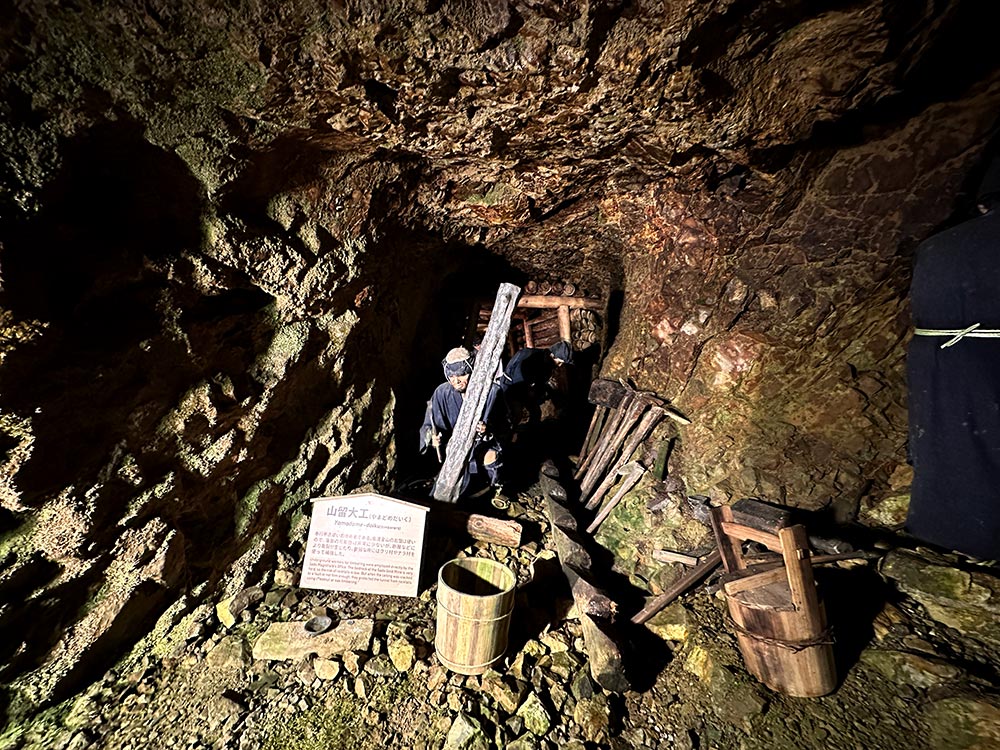
You can get separate tickets for each mine, but I recommend getting a combined ticket so you can see both mines and contrast how different early and modern mining conditions are.
Doyu Mine is the more modern one from the Meiji era and only closed as recently as 1989.At first glance it seems a bit duller, but the real action here is that half of this tour takes place outdoors. The highlight point is the Doyu no Warato, where they blasted a hole in the peak of the mountain making it look like someone tried to cleave the mountain open. This allowed them to connect two mining tunnels, and you can actually take a walk to the site of the hole on the mountain side today.

Visitor Info
You’ll need to take a ferry to get to Sado Island. Most of the ferries go from Niigata City to Ryotsu Port on the east coast of Sado Island – jetfoils that take about an hour as well as larger car ferries that take roughly 2.5 hours. You can also take a car ferry from Naoetsu to Ogi Port in the south of Sado Island. More info on prices, schedules and ticket reservations can be made at the Sado Kisen website.
Sado Island is pretty rural, and while there are bus services to get around the island, they don’t come that often so renting a car is a much more efficient way to get around. Sado Kinzan in Aikawa is about 45 minutes’ drive west of Ryotsu Port. I rented a car from Toyota Rent a Car which has a booth right at the Ryotsu port.

The combined ticket for Sodayu Mine and Doyu Mine cost 1,500 yen though you can buy tickets for each mine separately as well. Bring a jacket as it is several degrees colder in the mines than outside. The mines can be a bit claustrophobic, expect to do a fair amount of walking. Each mine takes about 30-40 minutes to complete in total. More info can be found on the Sado Kinzan website.
Adventurous visitors can consider booking the private Yamashi Tour for a more intense caving experience that requires a torch and a hard hat – prior bookings are required.
What’s nearby
Very close to Sado Kinzan is the Kitazawa Flotation Plant, an abandoned group of structures which were used to process the ore extracted from the mines. Since the mines shut down they’ve been left as is, and nature has taken over turning it into rather cool green-covered structures.
While you can’t explore the abandoned structures, the real hidden gem is to come back at night as the structures are lit up with rainbow lights. Along with some accompanying atmospheric music, the sight is both quite enchanting and unearthly.
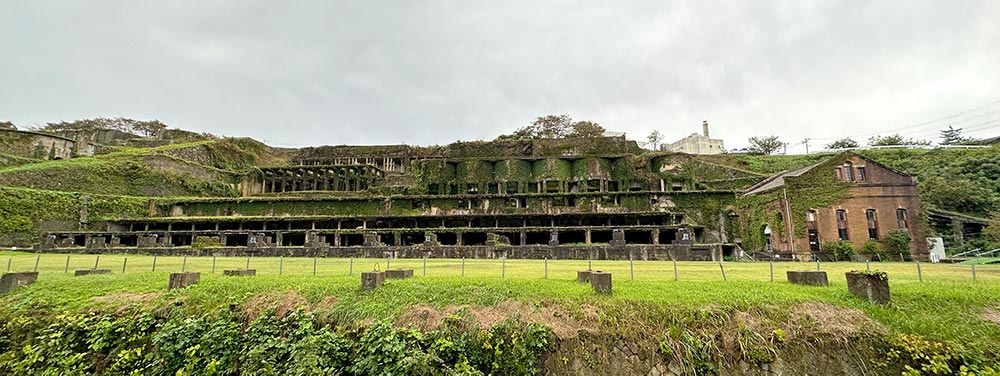

If you want to try your hand at finding any remnant gold left on the island, you can head to Nishimikawa Gold Park where instead of mining, you can do another old school sourcing technique which is to pan for gold. This facility is located on the site of the Nishimikawa Gold Mine which apparently is even older with a thousand years of history. For 1,000 yen, you can pan the sand-filled troughs here and see how many gold flakes you can come away with. I didn’t try this myself, but panning looks like pretty hard work.
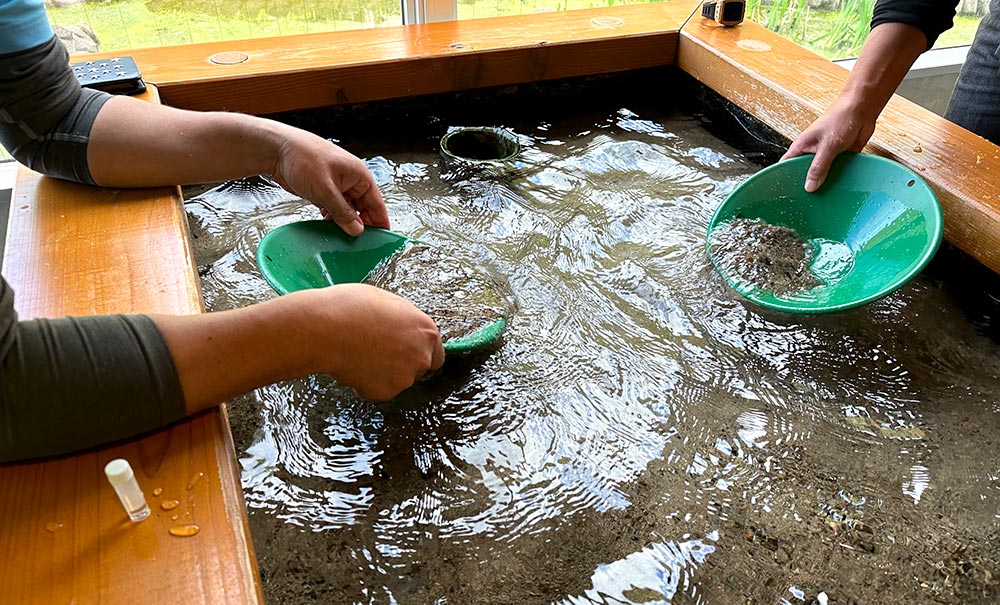

Sip and soak in Niigata’s famous sake
Ponshukan – Echigo Yuzawa
With rice as one of Niigata’s defining agricultural products, it’s no wonder that this region has some excellent sake breweries to taste and purchase local brews. While it’s a fun way to explore the region, you might think it would be easier to just taste all the sake in one spot.
Niigata’s Yuzawa region is one of the most accessible places to ski in Japan as it is connected directly by Shinkansen from Tokyo. The Echigo Yuzawa station is home to Ponshukan, a place where over 100 different types of sake from Niigata breweries are available for sampling. When I visited, there were 132 dispensers, mostly of sakes and a handful of wines as well.

500 yen buys you 5 tokens, which lets you try up to 5 different sakes in the shop (some sakes cost more than 1 token). I’m one of those people who can’t handle having too many options, so it’s great that the shop displays recommendations by the shop staff, as well as what sakes recorded the highest sales in the previous month to help make up your mind. It even has some little quizzes that recommend you a sake based on your mood or taste.
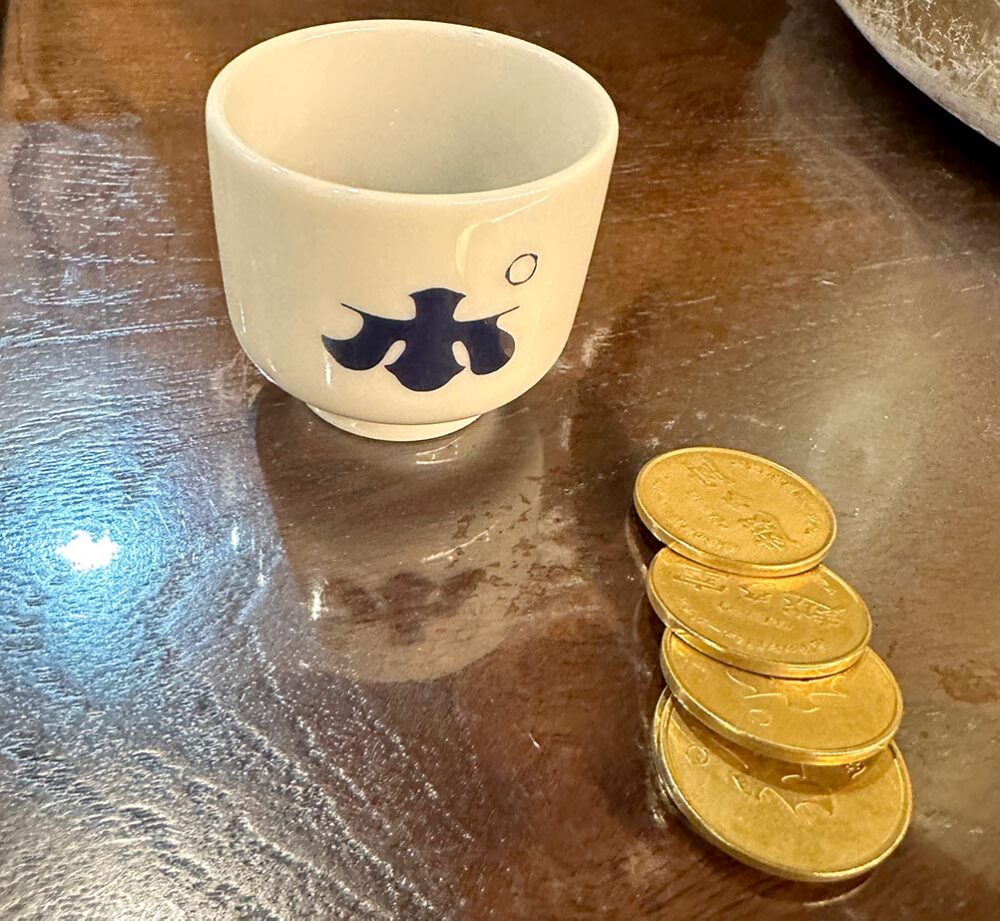
Of the three Ponshukans in Niigata, one hidden gem that makes the Echigo Yuzawa Ponshukan special is that you don’t just get to drink sake there, but you even get to bathe in it. There is a small sake bath located behind the sake tasting area with a small bath that has sake infused water. Sake is supposed to make your skin supple and also improves blood circulation!

The smell of sake is quite obvious when you first enter the bath, though I wished the bath was a little bigger or more than one pool was available as it might not be so pleasant if it was crowded. It was a nice way to wind down after sake tasting, and with its location right in the train station and special lockers big enough for luggage, it’s not a bad option if you have a long wait for your next train! Here’s my guide on how to onsen in Japan.
I couldn’t take photo inside the bath obviously for privacy reasons, but you can see some photos on the Ponshukan website.
After the bath, indulge in some koji ice cream or a koji latte to cool off – koji is fermented malted rice that is used to make sake. The stall is right next to the entrance of the sake bath.
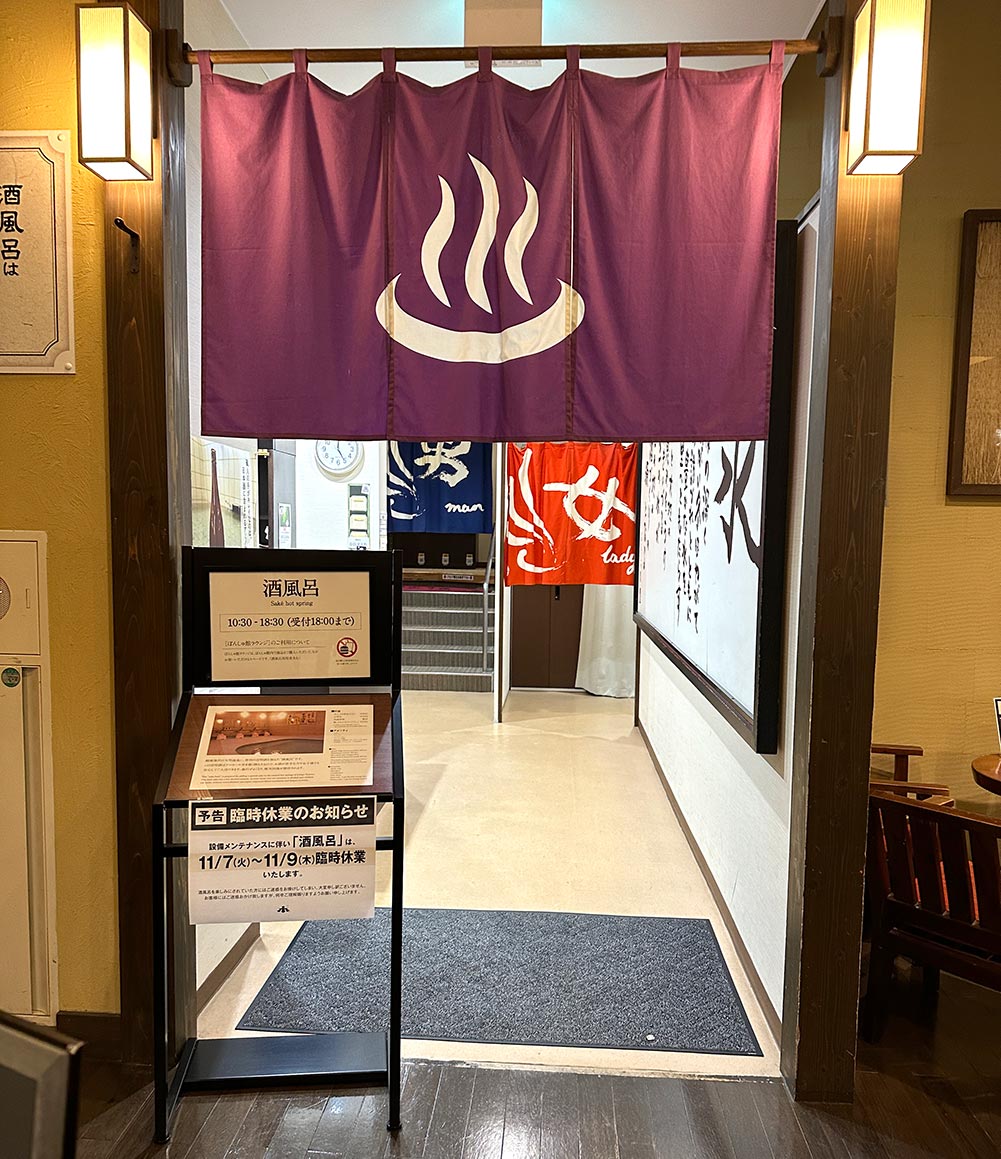
Visitor info
Echigo Yuzawa Train Station is about 1hr 15mins away from Tokyo station by Shinkansen.
Ponshukan is located at three different train stations – Echigo Yuzawa, Niigata and Nagaoka, but the sake bath can only be found at the Echigo Yuzawa outlet. The sake bath costs 800 yen, and you’ll need 2 x 100 yen coins to use the lockers in the bath area (refundable).
Tokens for sake tasting in Ponshukan are bought in batches of 5 for 500 yen, and you are given a small sake cup to do your tasting – return it when you are done.
Remember that if you plan to drink, Japan has a zero tolerance rule when it comes to drink driving, so make sure you’re taking public transport or there’s a designated driver.
Have you been to Japan’ Niigata region? What other hidden gems have you found here? Share them with me in the comments so I have even more reasons to go back in future.
In the meantime, check out more Niigata posts here:
Sado Island road trip guide: Toki birds, tub boats and gold mines 佐渡島
Echigo Tsumari Art Triennale guide for the arts lover in Niigata
James Turrell House of Light 光の館 – Sleeping in an artwork at Echigo Tsumari Art Triennale
This article is sponsored by Income Insurance. Whether it’s uncovering hidden traditions in remote areas or exploring hidden corners of an island, make sure you’re covered by travel insurance before your trip so you can have fun exploring adventurous hidden gems and travel with confidence. Enjoy up to $15,000 coverage for overseas transport and accommodation expense, including for new COVID-19 variants^ with Income’s Travel Insurance.
Learn more about Income’s Travel Insurance and check out the latest travel insurance promotions here.
Policy Ts&Cs apply. Protected up to specified limits by SDIC.
All opinions expressed here are those of The Occasional Traveller and not of Income Insurance Limited (“Income”). The information provided here is for general information only and does not constitute an offer, recommendation, solicitation or advice to buy any insurance product(s). You should seek personalised financial advice before you purchase any insurance product. The Occasional Traveller is responsible for the accuracy and completeness of all information provided and intellectual property used in this article. Income is not responsible nor liable to any party for the content of this article and intellectual property used in this article. Buying insurance that is not suitable for you may impact your ability to finance your future insurance needs. Precise terms, conditions and exclusions of the insurance product are found here. The insurance product referred to in this article is underwritten and issued by Income.
This article may also contain hyperlinks to third party websites that are included for your convenience. Such linked websites are not under Income’s control and Income is not responsible for the contents of such linked websites or the consequences of accessing any link in any such websites. Income is also not responsible for any form of transmission received from any third party websites. The inclusion of any such link does not imply endorsement by Income of any such third party websites or any association with its owners or operators. You agree that any access to and/or use of such linked websites is at your own risk and any dealings with any such third parties included within this article, and any other terms and conditions associated with such transaction and promotion is solely between you and the third party. Income will not be liable or responsible for any part of such transactions and promotions.
Information is correct as at 10 November 2023.
^ For trip cancellation and trip shortening.

